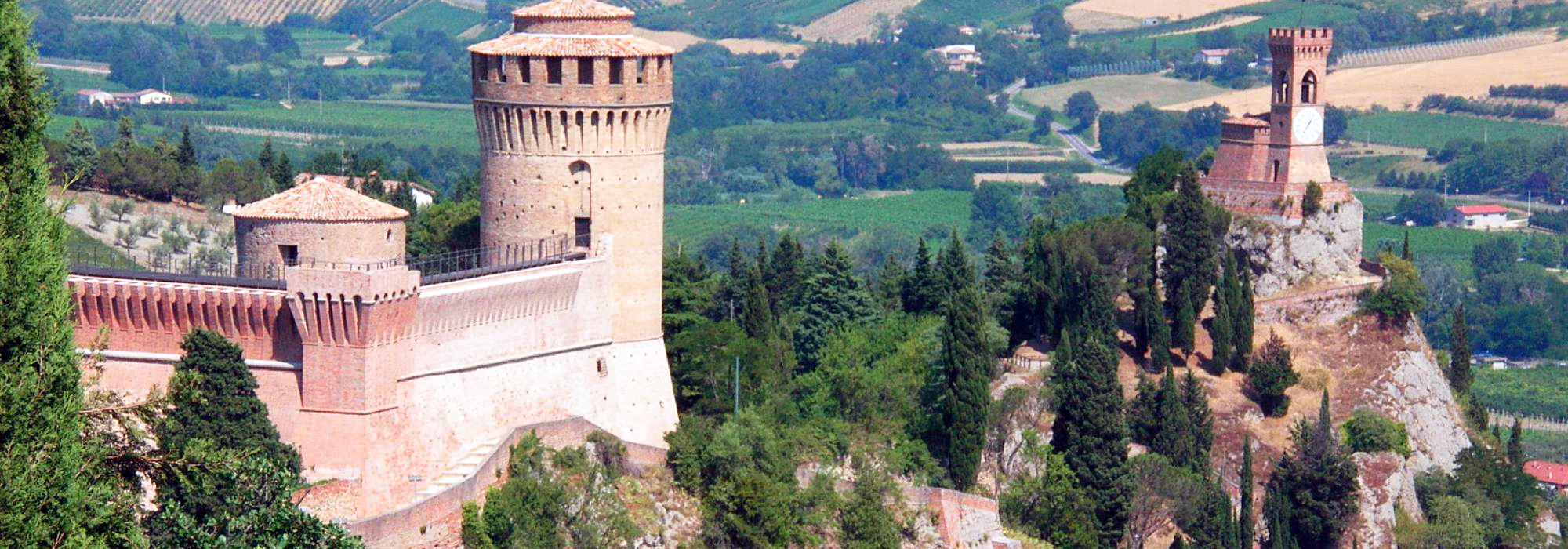The northern region of Emilia Romagna is known for many special features. It is the breadbasket of Italy, producing an abundance of grains and vegetables. It is also the home of Parma prosciutto and Parmigiano cheese. The region also contains Italy’s Motor Valley, home to Ferrari, Lamborghini, Maserati and Pagani. One of the region’s nine provinces is Ravenna, which is known for its well-preserved late Roman and Byzantine architecture and contains eight of Italy’s 53 UNESCO World Heritage sites – an astounding 15% of the country’s total! To put it in another way, the province would rank 35th in the world, based on the number of sites, all of which are located within an area of 717 square miles. If the same concentration was applied to the U.S., this country would have 42,377 UNESCO Sites; it has 23.
Ravenna is also the name of the capital city of the province and was an important city going back to the time of the Romans. It borders the Adriatic Sea and Ravenna (the city) originally consisted of houses built on piles within a series of small islands in a marshy lagoon – a situation similar to Venice several centuries later. The Romans accepted it into the Republic in 89 BC. Ravenna prospered under Roman rule and Emperor Trajan built a 43.50 mile-long aqueduct in the area at the beginning of the 2nd century.
Ravenna was the capital city of the Western Roman Empire from 402 until that Empire collapsed in 476. It was during this period that the first of the UNESCO Sites were built. Christian religion was favored by the Imperial court and religious buildings make up the UNESCO list. Over the next two centuries the mosaics and architecture of the churches, basilicas, baptisteries and mausoleums built have left a legacy for the ages.
The Baptistery of Neon is the most ancient monument remaining in the city, partly built on the site of a Roman bath. The octagonal brick structure was erected by Bishop Ursus at the end of the 4th century as part of his great Basilica (destroyed in 1734). The baptistery was finished by Bishop Neon at the end of the 5th century, at which time the mosaic decorations were added. The original floor is now some ten feet underground, so the full structure and extent of the building can no longer be seen. The octagonal design of the building, employed in virtually all early Christian baptisteries, symbolizes the seven days of the week, plus the Day of the Resurrection and Eternal Life. The ceiling mosaic depicts John the Baptist baptizing Jesus standing waist high in the Jordan River. A procession of the twelve apostles proceeds around the center mosaic in two directions, ending with Saint Peter meeting Saint Paul.
The Mausoleum of Galla Placidia is the earliest of the mosaic monuments (as opposed to having the mosaics added later). It is also the best preserved of all. The building was formerly the oratory of the Church of the Holy Cross and now contains three sarcophagi. The largest sarcophagus is thought to have contained the remains of Galla Placidia, who died 450. She was the daughter of the Roman Emperor Theodosius I. Unfortunately, in 1577, the contents of the sarcophagus were accidentally burned. The sarcophagus to the right is believed to be Galla’s son, Emperor Valentinian III, while the one on the left is her husband, Emperor Constantius III.
The Archbishop’s Chapel, or Archiepiscopal Chapel, is located on the first floor of the bishops’ palace in Ravenna and is the smallest of the famous mosaic sites. It is a private oratory of Trinitarian bishops dating from the turn of the 6th century. Although commonly attributed to St. Peter Chrysologus, Archbishop of Ravenna from 433–450, the chapel was actually built by Peter II shortly after he became Archbishop in 495. The mosaics date from the original construction, or soon after.
The Basilica of Sant’ Apollinare Nuovo was erected by Theodoric the Great as his palace chapel during the first quarter of the 6th century. According to legend, Pope Gregory the Great ordered the mosaics in the church to be blackened. The Pontiff believed that the mosaic’s lustrous golden color and glorious scenes were distracting to worshipers, who should instead be concentrating on prayer. St. Gregory was a great Pope, but he was a bit of a stick in the mud. The basilica was renamed in 856 AD when relics of Saint Apollinaris were transferred from the Basilica of Sant’Apollinare in Classe because of the threat posed by frequent raids of pirates from the Adriatic Sea. Renovations and alterations were performed on the mosaics in the mid-19th century. The present apse is a reconstruction after being damaged during World War I.
Having two basilicas dedicated to Saint Apollinaris certainly confuses matters. The Basilica of Sant’ Apollinare in Classe is also a UNESCO site. This imposing brick structure was also built at the beginning of 6th century. The nave contains 24 marble columns with unusual carved capitals containing acanthus leaves that are twisted as if being buffeted by the wind. Most of the walls are bare, but were once covered with beautiful mosaics. These were removed by the Venetians in 1449, although thankfully, the mosaic decoration in the apse and on the triumphal arch still remain and are the church’s most striking features.
The Basilica of San Vitale is one of the most important examples of early Christian Byzantine art and architecture in Europe. According to legend, the church was erected on the site of the martyrdom of Saint Vitalis. The church was completed in 547. Its building combines Roman elements – its dome, the shape of doorways and the use of stepped towers, but the basilica also integrates Byzantine elements, including a polygonal apse and an early example of flying buttresses. The church is most famous for its wealth of Byzantine mosaics, which are the largest outside Constantinople. The church is of extreme importance in Byzantine art. It is the only surviving building in the world that reflects the design of the Byzantine Imperial Palace Audience Chamber.
In addition to remarkable mosaics of the UNESCO sites, Ravenna also contains many charming towns such as Brisighella, a medieval village with cobbled streets that were laid out following donkey routes. The town is known for its olive oil mill, majestic fortress and the imposing clock tower.
One of the most important centers in the world for the production of ceramic art is in Faenza, which contains a wonderful ceramics museum. You can also visit a local workshop to create your own unique ceramic creation. In the small town of Russi there is a fascinating archaeological park with an ancient Roman house and a 16th century castle, Palazzo San Giacomo.





